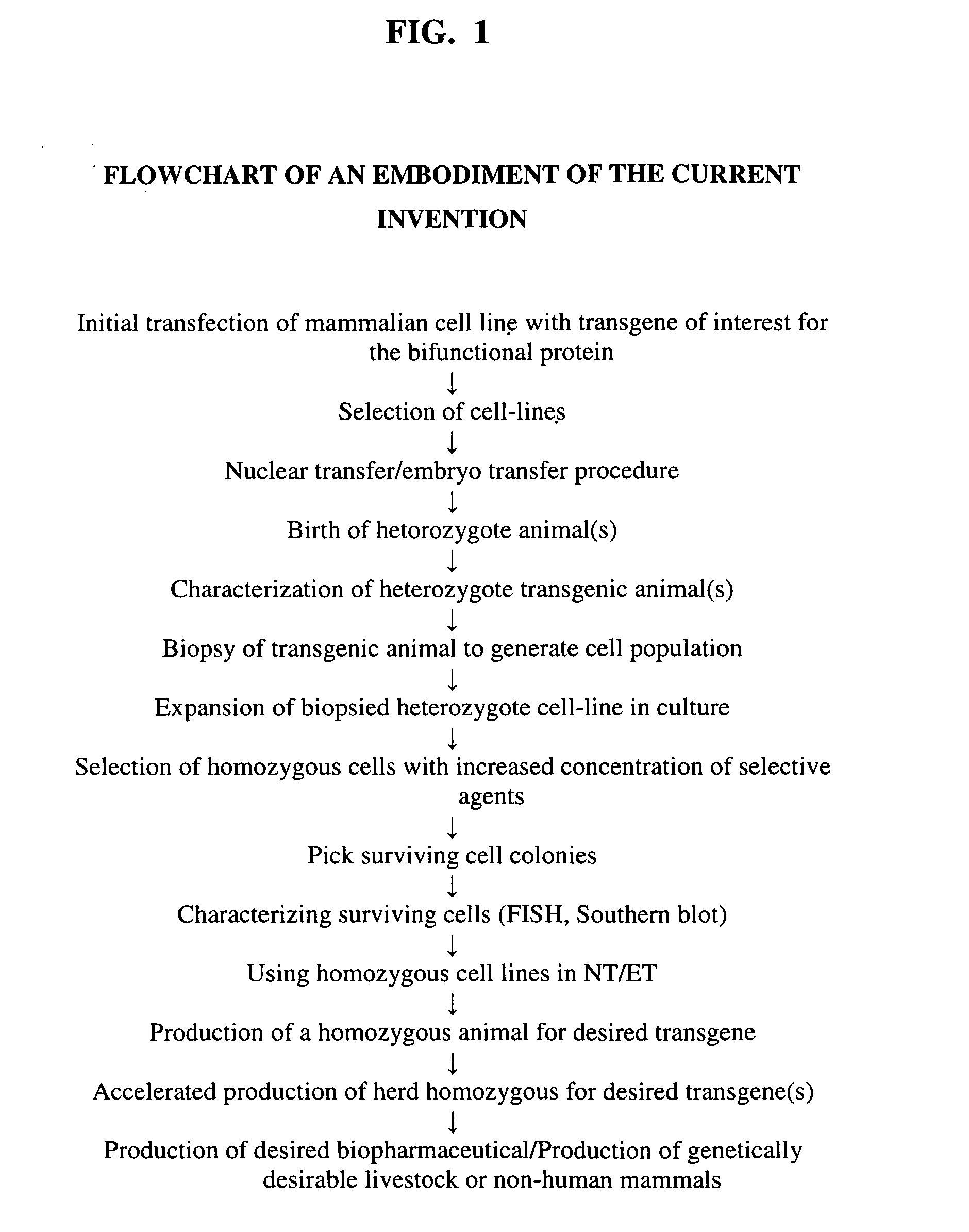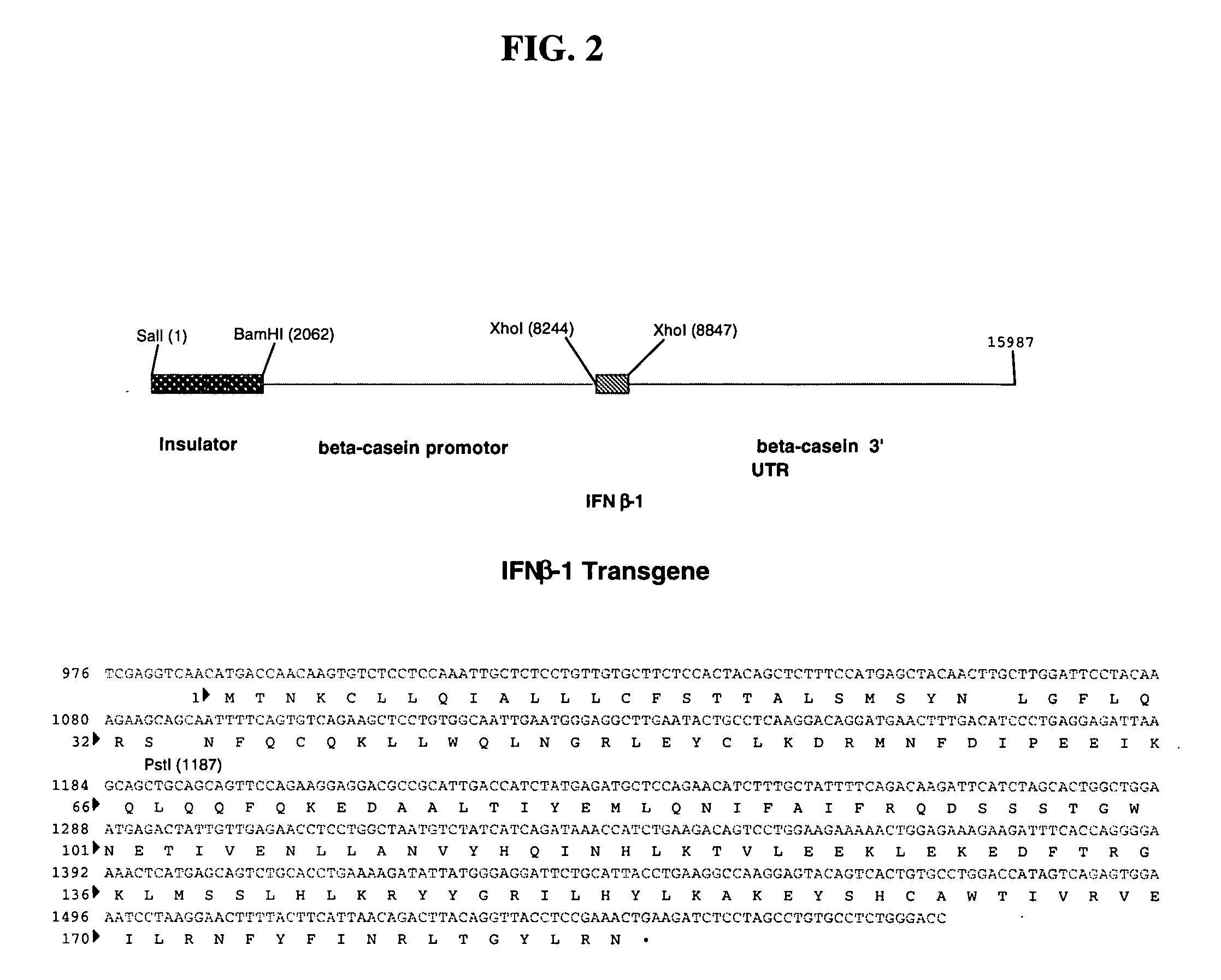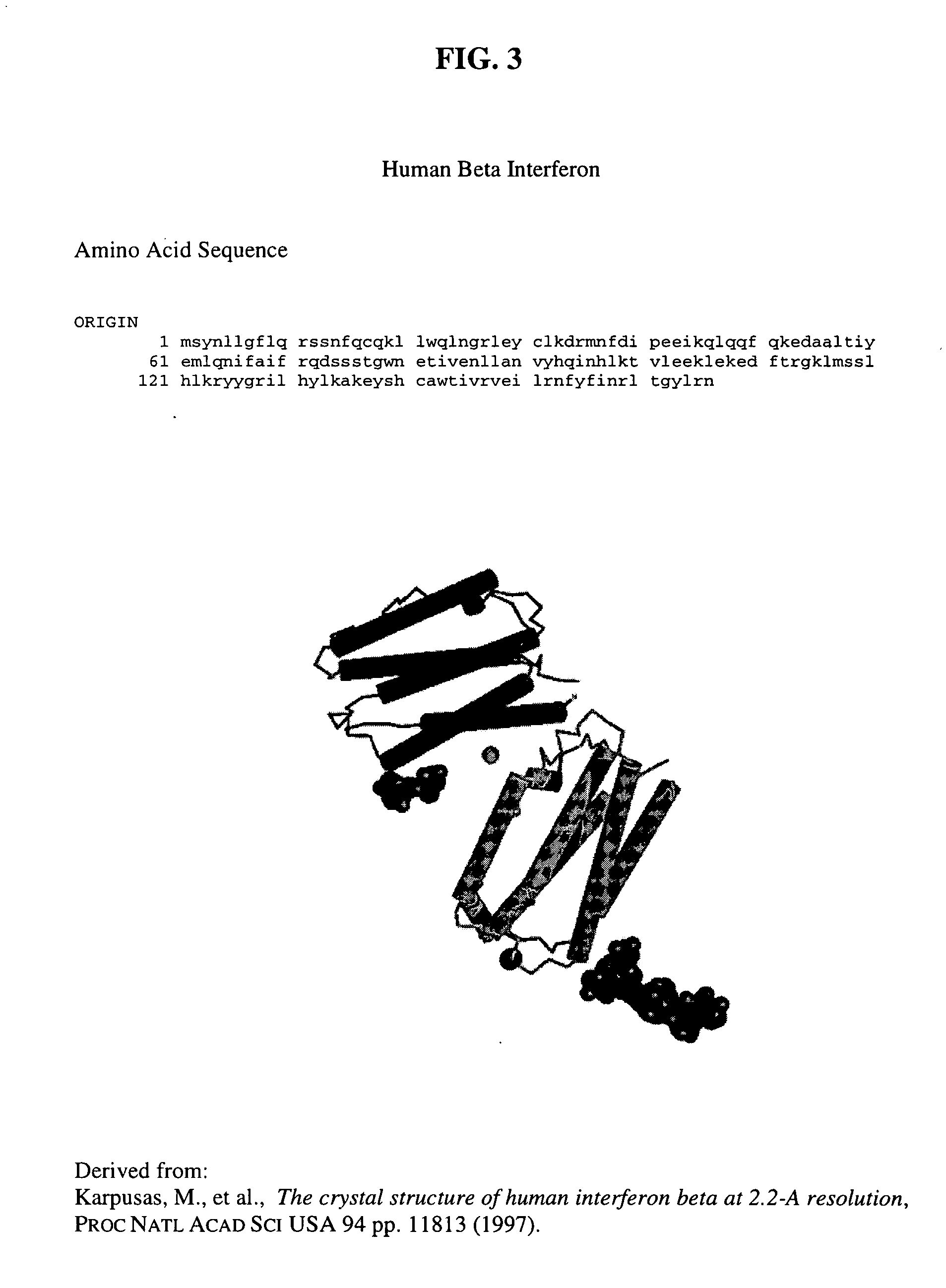Method for the production of fusion proteins in transgenic mammal milk
a technology of fusion proteins and mammal milk, which is applied in the direction of vectors, dna/rna fragmentation, fungi, etc., can solve the problems of low stability, one or more potential therapeutic activities cannot be pharmaceutically exploited, and macromolecules and/or proteins cannot be produced, so as to facilitate and accelerate the production of transgenic animals, increase the yield of a desired protein much faster, and reduce the effect of toxicity
- Summary
- Abstract
- Description
- Claims
- Application Information
AI Technical Summary
Benefits of technology
Problems solved by technology
Method used
Image
Examples
example 1
AFP—β Interferon
[0086] Another feature of the invention is a method of treating a patient in need of the bi-functional fusion protein of the invention by administering to the patient a therapeutically-effective amount of a biological fluid (e.g., milk, urine, saliva, seminal or vaginal fluid, synovial fluid, lymph fluid, amniotic fluid, the fluid within the yolk sac, the chorion, or the allantois of an egg, blood, sweat, and tears; or an aqueous solution produced by a plant, including, for example, exudates or guttation fluid, xylem, phloem, resin, and nectar), or extract thereof, that includes the bi-functional fusion protein of the invention that is obtained from a transgenic non-human organism (e.g., a mammal (e.g., a mouse, goat, sheep, camel, cow, pig, rabbit, horse, ox, or llama), a bird, a reptile, an amphibian, or a plant). In a desired embodiment, the bi-functional protein of the invention has the sequence set forth in the combination of SEQ ID NOS: 4, 10 and 24. In anothe...
example 2
Fusion Protein Sequences of Interest
[0087] A. Alpha Feto Protein
Seq. Id.: 1The entire cDNA sequence setforth in Genbank AccessionNo. V01514.Seq. Id.: 2Genbank Accession(amino acids 1-609).No. V01514Seq. Id.: 3Genbank Accession(nucleic acids 99-1874)No. V01514from the cDNA of Seq. Id. 1.Seq. Id.: 4Genbank Accession(amino acids 19-609).No. V01514Seq. Id.: 5Genbank Accession(nucleic acids sequence of theNo. V01514precursor non-glycosylatedhuman alpha-fetoprotein forthe nucleic acids 45-1874).Seq. Id.: 6Genbank Accession(amino acids 19-609)No. V01514except including a mutation atamino acid position 233 ofSEQ ID NO: 4 from an as-paragine residue to aglutamine residue to removethe single glycosylationsite in AFP.Seq. Id.: 7Genbank Accession(amino acids 1-18) the AFPNo. V01514secretory signal.Seq. Id.: 8Genbank Accession(nucleotides 45-98 of the AFPNo. V01514secretory signal, DNAsequence).Seq. Id.: 9human AFP gene (GenBankAccession #M16110)
[0088] B. Partner Protein Sequences of Interest...
example 3
Purifying the Fusion Protein
[0224] To obtain an increased yield of fusion proteins, it is desired to first purify them, according to procedures that are well known in the art. These steps include: collecting the milk from a transgenic animal or removing the cells from culture via centrifugation, followed by precipitation, tangential flow filtration, and chromatography methodologies, such as low pressure SEC and preparative RP-HPLC chromatography. These steps are followed by: buffer exchange, depyrogenation, and lyophilization.
PUM
| Property | Measurement | Unit |
|---|---|---|
| Composition | aaaaa | aaaaa |
| Biological properties | aaaaa | aaaaa |
| Nucleic acid sequence | aaaaa | aaaaa |
Abstract
Description
Claims
Application Information
 Login to View More
Login to View More - R&D
- Intellectual Property
- Life Sciences
- Materials
- Tech Scout
- Unparalleled Data Quality
- Higher Quality Content
- 60% Fewer Hallucinations
Browse by: Latest US Patents, China's latest patents, Technical Efficacy Thesaurus, Application Domain, Technology Topic, Popular Technical Reports.
© 2025 PatSnap. All rights reserved.Legal|Privacy policy|Modern Slavery Act Transparency Statement|Sitemap|About US| Contact US: help@patsnap.com



